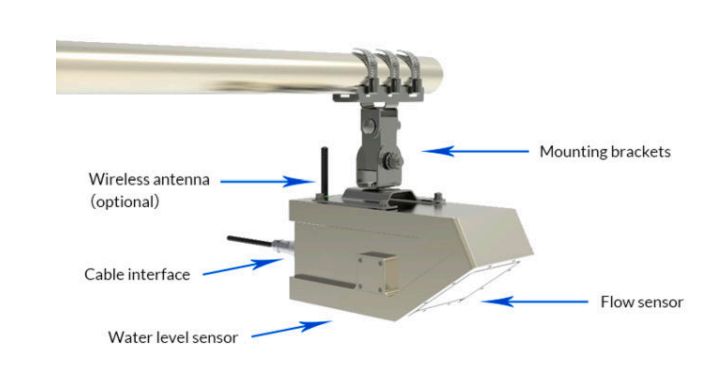Temperature monitoring systems are a critical component in modern industrial applications. As a purchasing manager, application engineer, or someone with a keen interest in this technology, understanding the nuances of these systems can significantly impact your operations. In this article, we’ll explore the principles behind temperature monitoring systems, delve into their accuracy and reliability, and highlight typical use cases across various industries.

Understanding Temperature Monitoring Systems
At its core, a temperature monitoring system is designed to measure, record, and regulate temperature levels in various environments. These systems typically consist of sensors and gauges, such as outdoor temperature sensors, air temperature sensors, and digital temperature gauges. The primary function is to ensure that temperatures remain within a specific range, critical for maintaining product quality, safety, and energy efficiency.
How Do Temperature Monitoring Systems Work?
- Sensors: Temperature sensors, including ambient temperature sensors and air temperature sensors, detect and measure the temperature of the surrounding environment. These sensors can be digital or analog and often use thermocouples, thermistors, or resistance temperature detectors (RTDs) to measure temperature accurately.
- Gauges: A digital temperature gauge displays the readings from the sensors, providing real-time data that can be monitored manually or integrated into automated systems.
- Data Logging and Alerts: Many modern systems include data logging capabilities, recording temperature data over time. If temperatures deviate from the desired range, the system can trigger alerts to inform operators of potential issues.
Visual Aid Suggestion: Consider including a diagram that illustrates the flow from temperature sensing to data logging and alert generation.
Accuracy and Reliability: The Cornerstones of Temperature Monitoring
When it comes to industrial applications, accuracy and reliability are paramount. Temperature monitoring systems must deliver precise readings consistently to ensure optimal performance.
- Accuracy: The accuracy of a temperature sensor is determined by its ability to measure the true temperature. High-quality ambient temperature sensors can offer accuracy within ±0.1°C, which is critical in industries like pharmaceuticals and food processing, where even slight temperature fluctuations can have significant consequences.
- Reliability: Reliable temperature monitoring systems are designed to function continuously under harsh conditions. They must withstand environmental factors like dust, moisture, and extreme temperatures without compromising their performance.
Expert Insight: “In industries where precision is key, a reliable temperature monitoring system is not just an asset—it’s a necessity. Consistent performance can prevent costly downtime and ensure product integrity,” says Jane Doe, an industry expert in industrial automation.
Typical Use Cases Across Industries
Temperature monitoring systems are versatile and find applications across various industries. Below are some common use cases:
- Pharmaceuticals: Maintaining precise temperature control during the storage and transportation of drugs is critical to ensure their efficacy. A robust temperature monitoring system helps adhere to regulatory standards and prevents costly product losses.
- Food & Beverage: In food processing and storage, controlling temperature is essential for preventing spoilage and ensuring food safety. Outdoor temperature sensors are often used in refrigeration systems to monitor ambient conditions.
- Manufacturing: Many manufacturing processes, such as metal fabrication or chemical production, require strict temperature control to maintain product quality. Digital temperature gauges provide real-time monitoring to adjust processes as needed.
- HVAC Systems: Heating, ventilation, and air conditioning systems rely on accurate temperature monitoring to maintain comfortable and energy-efficient environments. Air temperature sensors play a crucial role in these systems.
- Data Centers: Temperature control is vital in data centers to prevent overheating of servers. Reliable temperature monitoring systems help manage airflow and cooling to ensure uninterrupted operations.
Visual Aid Suggestion: An infographic showcasing different industries and how they utilize temperature monitoring systems could enhance reader engagement.
Why Choose Our Temperature Monitoring Systems?
As a manufacturer, we understand the critical role temperature monitoring systems play in your operations. Our systems are designed with cutting-edge technology, ensuring high accuracy, reliability, and ease of use. Whether you need an outdoor temperature sensor for rugged environments or a digital temperature gauge for precise monitoring, we have a solution tailored to your needs.
Call to Action: Take Control of Your Temperature Monitoring Today
Ready to enhance your industrial operations with state-of-the-art temperature monitoring systems? Reach out to us today for more information or to schedule a product demo. Let us help you find the perfect solution to meet your specific needs.
External Link Suggestion: For more detailed information on temperature sensors, visit Wikipedia’s page on temperature sensors.
In summary, investing in a reliable temperature monitoring system is crucial for maintaining operational efficiency and product quality across various industries. With our advanced technology, you can trust that your temperature monitoring needs will be met with precision and reliability.




